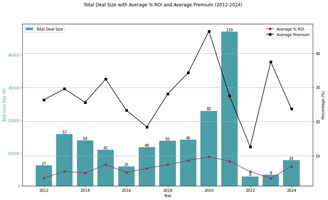(originally published July 29, 2024) After two very difficult years in the market for issuing...
Klarna’s Long-Awaited IPO: A New Era for the Global Commerce Network

Klarna Group plc, the Swedish-born fintech giant now domiciled in London, is finally heading to Wall Street. The company has filed for an initial public offering on the New York Stock Exchange under the ticker KLAR, marking one of the most anticipated fintech listings in recent years. The deal will see a total of 34.3 million ordinary shares come to market, with Klarna itself issuing just over 5.5 million shares while existing shareholders sell nearly 28.8 million. At the indicative price range of $35 to $37 per share, the transaction implies a market value of roughly $15–16 billion, placing Klarna among the largest European tech flotations in recent memory.

The underwriter lineup reads like a who’s who of Wall Street: Goldman Sachs, J.P. Morgan, and Morgan Stanley lead the syndicate, joined by BofA Securities, Citigroup, Deutsche Bank, Société Générale, and UBS. Despite the heavy secondary component of the offering, Klarna will still raise close to $200 million in primary proceeds to fund general corporate purposes and growth initiatives.
At its core, Klarna positions itself as a next-generation commerce network rather than a traditional “buy now, pay later” player. The company has scaled to 111 million active consumers and nearly 790,000 merchants across 26 countries, processing a staggering $112 billion in gross merchandise volume in the past twelve months. Beyond flexible payments like Pay Later and Fair Financing, Klarna also generates revenue through its growing advertising business, which connects brands directly with high-intent consumers. Strategic partnerships with Walmart’s OnePay, Stripe, Adyen, Apple Pay, and Google Pay highlight Klarna’s embedded role in global commerce.

The company’s journey began in Stockholm in 2005 with a simple mission: make online payments easier and safer. It grew across the Nordics and Germany in the 2010s, obtained a European banking license in 2017, and made a major push into the U.S. market starting in 2019. In 2024, Klarna redomiciled to the U.K., setting the stage for this IPO. Along the way, it has pioneered consumer-friendly payment models, introduced the Klarna Card, rolled out an AI-powered shopping assistant, and expanded into savings accounts and banking services.

Still, the road has not been without bumps. Klarna operates in a fiercely competitive sector against credit card networks, banks, and fintech rivals like Affirm, Block, and PayPal. Regulatory scrutiny is intensifying around credit underwriting, AI usage, and consumer data privacy. The company also faces reputational risks tied to consumer trust, given its central role in handling payments and personal data.
Financial Summary
Klarna’s trajectory tells the story of a company evolving from hyper-growth to profitability, and now attempting to balance both

In 2023, Klarna generated $2.28 billion in revenue but posted a net loss of $249 million. In 2024, revenue climbed 23% to $2.81 billion and the company delivered its first annual profit in years — a modest $3 million. In the first half of 2025, revenue rose another 15% to $1.52 billion, though Klarna swung back to a $153 million net loss as it increased investments in marketing, technology, and expansion.

Looking ahead, Klarna is positioning itself for durable growth through five key initiatives: expanding its checkout penetration via PSP partnerships, driving wider adoption of the Klarna Card, scaling its neobank services and savings products, deepening its AI-driven personalization and efficiency, and growing its high-margin advertising revenues. The company believes its unique data set, global scale, and compounding network effects give it a structural advantage over both fintech and traditional banking competitors.
Comparable companies provide useful context. Affirm, Klarna’s U.S.-focused BNPL rival, has struggled with profitability and trades at a significantly lower valuation. Adyen, by contrast, commands a premium multiple as a global PSP. Klarna sits in the middle, with a valuation that reflects both its potential to expand margins and the lingering uncertainty of its operating model.
Investor sentiment going into the offering appears constructive. The price range is seen as relatively conservative, likely designed to ensure smooth trading and build positive momentum post-listing. Institutions are expected to take the lion’s share of allocations, though Klarna’s consumer brand recognition may attract meaningful retail interest as well.
Post-IPO, Klarna’s challenge will be to demonstrate that its 2024 profitability was not a one-off. The company has signaled that proceeds could be used to accelerate product innovation and support potential acquisitions. More importantly, Klarna will be judged on whether it can sustain revenue growth above 15% while gradually expanding margins and keeping credit losses in check. For long-term investors, Klarna’s IPO is more than a bet on BNPL — it’s a wager on the future of digital payments, AI-powered commerce, and the evolution of global consumer finance.
Klarna is scheduled to price its IPO on September 9, 2025, with its first day of trading on the New York Stock Exchange set for September 10 under the ticker KLAR.

